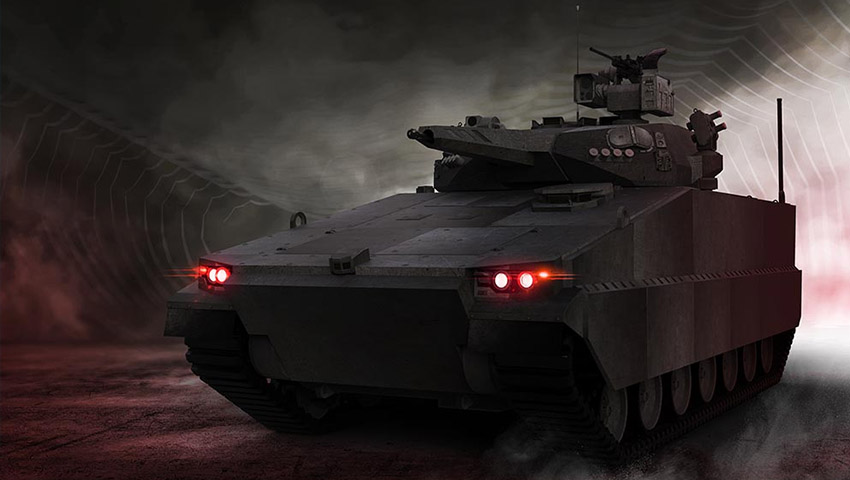Hanwha Defence Australia has laid down the challenge to its LAND 400 Phase 3 competitors with a focus on taking advantage of Australia's location, international relationships and emerging industry capabilities to provide Australian and export clients with leading-edge ground combat capabilities.
To continue reading the rest of this article, please log in.
Create free account to get unlimited news articles and more!
While Australia’s defence industry has gone from strength to strength in a short period of time – relying solely on domestic consumption is a fateful trap that has previously hindered the sustainable development of Australia’s broader manufacturing industries. Avoiding this pitfall requires a dramatically different approach to the policies that have been used in the past, paired with a growing focus on leveraging the nation's key economic and strategic partnerships.
The Defence Industrial Capability Plan released in 2018 identifies the government’s long-term vision to build and develop a robust, resilient and internationally competitive Australian defence industry base that is better able to help meet defence capability requirements.
Recognising the importance of the export market, the government established the Defence Export Strategy, which identifies that "Australian industry cannot sustain itself on the needs of the Australian Defence Force alone. New markets and opportunities to diversify are required to help unlock the full potential of Australian defence industry to grow, innovate, and support Defence’s future needs".
The $10-15 billion LAND 400 Phase 3 program to replace the Australian Army's Vietnam-era M113 armoured personnel carrier (APC) force, with a combination of a tracked infantry fighting vehicle (IFV) and tracked APC is shaping up to become a prime example for developing a robust export capability for Australia's domestic defence industry.
South Korean industrial titan Hanwha Defence Australia (HDA) is accelerating its plans to establish a credible, self-reliant Australian manufacturing base in Victoria. While focused on the Redback and LAND 400, there is significant interest in the recent announcement by the Prime Minister for the revitalisation of the K9 Self-Propelled Howitzer program, LAND 8112.
Speaking to Defence Connect, Richard Cho, managing director and vice president, Hanwha Defence Australia, explained Hanwha's "revolutionary" LAND 400 Phase 3 offering, saying, "One of the key benefits for both Australia and Korea is the proximity of Australian manufacturing centres to potential markets, combined with Korea's pursuit of an advanced infantry fighting/armoured fighting vehicle, which the AS21 Redback – Hanwha's proposal for LAND 400 Phase 3 – will serve as the basis for, while the potential offering of the AS-9 self-propelled howitzer to the British Army provides further opportunities for Australian industry."
Hanwha's offering, the AS21 Redback is based on the K21 IFV currently in service with the South Korean Army. The Redback variant will be an enhanced version of the standard K21, providing more protection against current ballistic and mine threats, with a larger internal volume to accommodate eight dismount troops and a crew of three soldiers including the driver, commander and gunner.
The modifications developed for the AS21 will also serve as the basis for Korea's own IFV/AFV program to replace the Korean Armed Forces K21 providing avenues for increased industry collaboration and supply chain integration for Australian industry, which Cho explained was a key focus for both Hanwha and the South Korean government as part of a broader government policy to develop a secondary supply chain.
This essential capability would be manufactured out of the Geelong area; HDA would be seeking to incorporate the K9 and Redback manufacturing line into its planned regional Geelong facility, ensuring hundreds of additional jobs and years of additional guaranteed work for both domestic and global programs.
The growing complexity and increasing commonality of major defence acquisition programs between a number of allied nations – particularly Five Eyes nations like the US, Australia, Canada and the UK – provides avenues for greater diplomatic and economic partnerships to support increased industry capability, strategic dispersal and interoperability.
"Australia's relationships with the Five Eyes nations in particular is of key importance for Hanwha and it is these relationships Hanwha seeks to support and enhance through the development of a fully integrated Australian defence industrial capability – this is key to supporting Hanwha's bid for both LAND 400 Phase 3 and LAND 8112," Cho added.
The full podcast interview with Richard Cho, managing director and vice president, Hanwha Defence Australia, is available here.

 Login
Login







